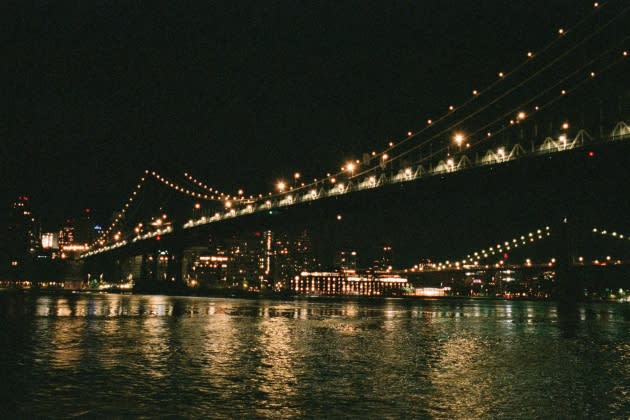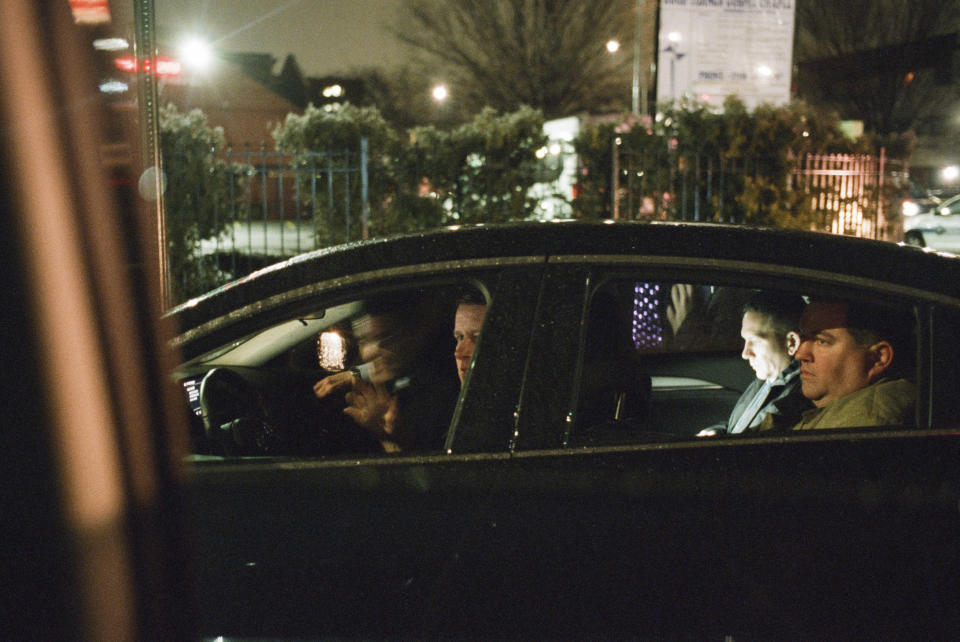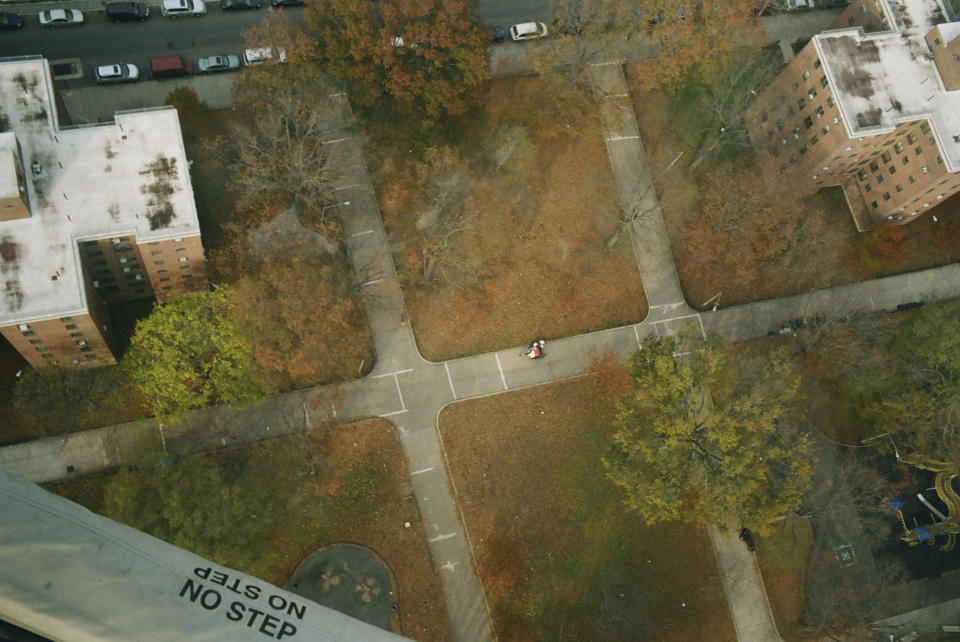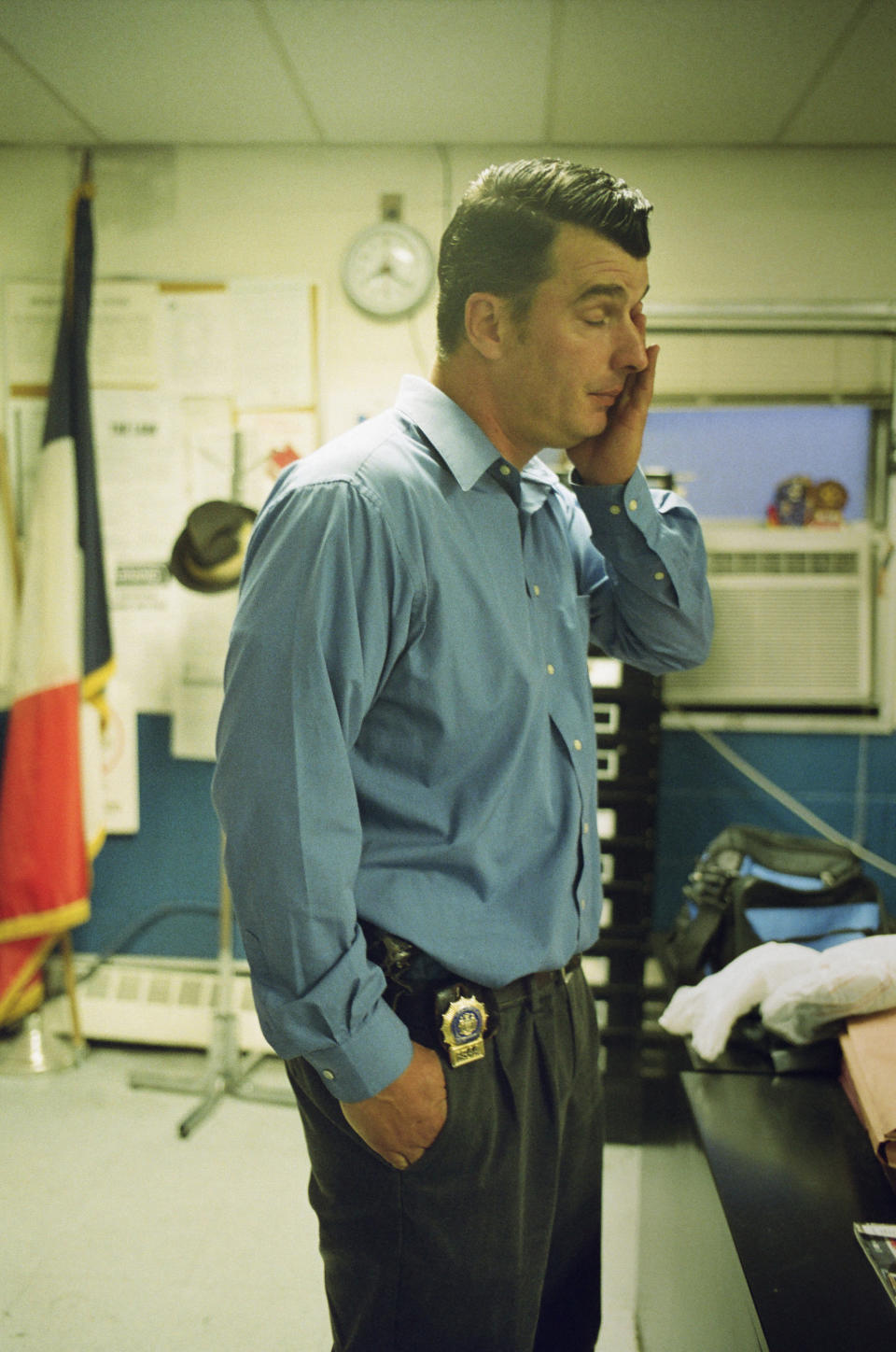Photographer Theo Wenner Discusses His New Book ‘Homicide’
- Oops!Something went wrong.Please try again later.

Why would a photographer spend a few years embedded with New York Police Department homicide detectives?
For Theo Wenner, it came down to his interest in the mythology of detectives in American culture that is along the lines of a Western or baseball. “It’s such an interesting sub-culture with so many traditions, codes and things that are passed down from generation-to-generation — with the way they do their work, the way they dress, the way they talk, the culture.”
More from WWD
The images in “Homicide,” his new Rizzoli-published tome explores what type of person chooses to a job where they must deal with life and death on a daily basis. From 2018 to 2020, Wenner was ensconced with the NYPD’s Brooklyn North command, gaining and insider’s view of the detectives’ top-notch knowledge of local neighborhoods, the city’s inner workings, how to listen to glean information, forming relationships and their ability to read between the lines. “They have such a deep understanding of people,” Wenner said. “They have such a feel to talk to people. All of these guys can talk to anyone. Anyone…it’s a feel that you either you have or you don’t.”
The Brooklyn North detectives also oversee the area of New York City’s highest murder rate. In 2020, Brooklyn North had 102 reported murders compared to 65 in 2019, which was a 56.9 percent increase, according to the NYPD.

Photo by Theo Wenner/Courtesy Rizzoli
Many know the lensman for his work for Document Journal, I-D, Self Service, M, Le Monde and Rolling Stone, as well as fashion assignments for Chanel and other luxury houses. He maintained commercial and editorial work while immersed with the NYPD detectives. Ten-hour shifts with them buzzed by, he said — “When you’re with them, it almost feels like time slows down and doesn’t exist. It’s almost like time doesn’t exist for them either, because they are so present. Things happen at any moment. There’s really no clock. It’s not like [anyone can predict] ‘Oh, a murder will happen in 20 minutes.’ You just never know. Time is not a huge part of the equation of their day-in, day-out [existence.]”
Whether it be a bleary-eyed detectives or investigators sitting slack in their office chairs, Wenner captured the in-between hours with his images. Of course, there are also more gruesome blood-splattered images of crime scenes and covered dead bodies. More cinematic synapses can be seen in shots of stakeouts in unmarked cars, the city’s skyline and aerial views of public housing. Occasionally, signs or graffiti add another dimension to the body of work.

Photo by Theo Wenner/Courtesy Rizzoli
Needless to say, seeing a dead body for the first time is emblazoned in his memory, as is everything else that he absorbed around that day. Never mind, the photographic proof. Switching gears from shooting advertisements or editorials in a photo studio during the day to meet the Brooklyn detectives was unquestionably “jarring,” he said. But the contrast also brought “so much more clarity to my eyes. It just creates a black and a white,” Wenner added.
Being with the detectives and knowing that something of great consequence could happen at any given moment “is a very hard thing to walk away from as a photographer,” he said. “…Literally life and death happens [in their presence.] And it’s always around the corner so when do you stop, because it never stops.”
Having since returned to editorial and advertising, he said the Brooklyn North experience hasn’t trivialized his current work. “It doesn’t because I am a photographer. Photography is photography to me. Everything is its own photo. I try not to let one thing inform another thing. I’m just focused on what I’m doing in that moment or at least try to be. Because after this, everything would be trivial. And that would be no good,” Wenner said.
His cover shot of Sigourney Weaver for Document will soon be out.
Asked how the public’s perception of law enforcement officials, which has changed in the past two years, could impact the reception of “Homicide,” Wenner said that is hard to say. Someone, who only hears about the book without seeing it, might have reservations, but he emphasized that the book itself is a documentation. “It’s not pro or anti. I never wanted it to be any kind of political statement. Homicide detectives are really in a category unto themselves. They are there after the fact. They’re investigators. They’re not making arrests,” he said.
Asked what he wants people to know about them, Wenner said, “That’s up to you. There’s really not an answer to that question.”

Photo by Theo Wenner/Courtesy Rizzoli
Obsessed as he was with movies growing up, the photographer also read a good deal of true crime books and biographies. True to the more cinematic photos in his new book, Wenner would like to delve into films and is at work on something along those lines without revealing anything further. As for the Brooklyn North detectives, Wenner said, “They look like they came straight out of central casting. They are so cinematic to begin with. That atmosphere feels like a movie — the lighting in the offices, everything.”
Best of WWD
Sign up for WWD's Newsletter. For the latest news, follow us on Twitter, Facebook, and Instagram.

